#Martin Carthy
Explore tagged Tumblr posts
Text
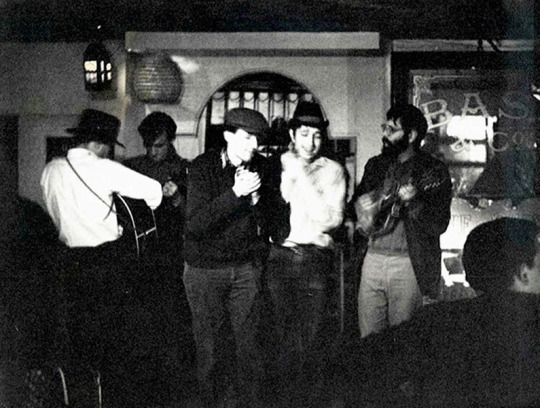

ethan signer, eric von schmidt, martin carthy, bob dylan and richard farina, troubadour club, london, england, january 12, 1963. photos by alison chapman mclean
x
#bob dylan#ethan signer#eric von schmidt#martin carthy#richard farina#london#england#1963#alison chapman mclean
18 notes
·
View notes
Text

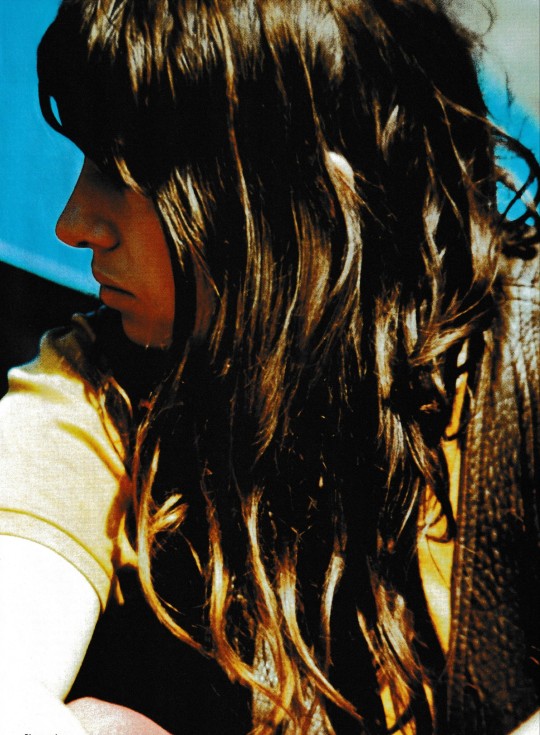

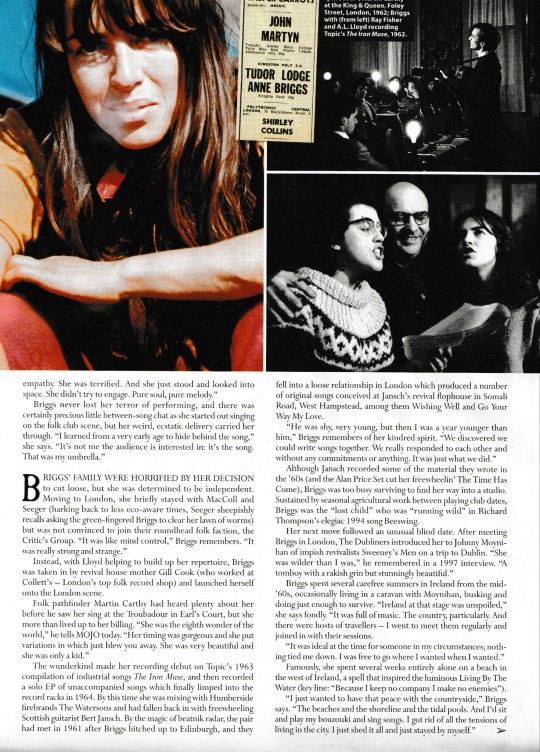
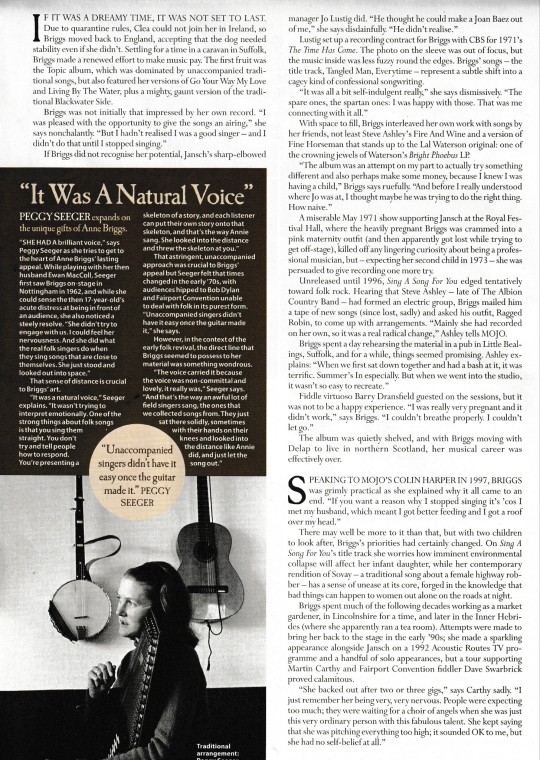
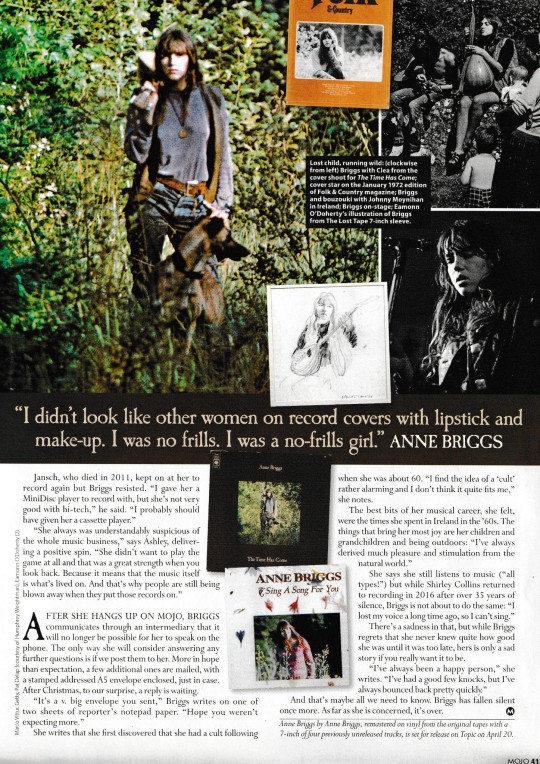
#mojo#mojo magazine#anne briggs#cecil sharp house#ewan maccoll#peggy seeger#martin carthy#ray fisher#a.l. lloyd#johnny moynihan
36 notes
·
View notes
Text
youtube
This brings me so much joy
4 notes
·
View notes
Text

10 notes
·
View notes
Text
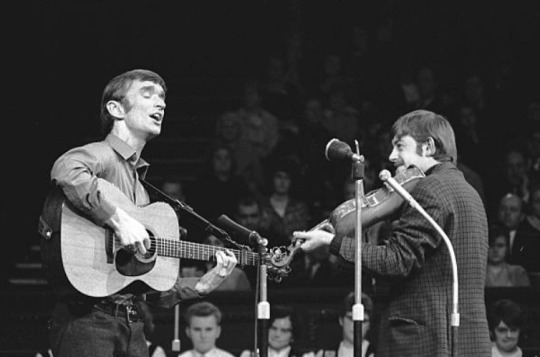
Martin Carthy & Dave Swarbrick - St. Andrews Folk Club, Fife, Scotland, 1968
Since we listened to Dylan playing "Girl From The North Country" yesterday, let's listen to the guy Bob kinda/sorta learned it from — living legend Martin Carthy! More than 60 years later, Dylan and Carthy are still pals, according to a recent Uncut interview: "He's a mate, it's a real friendship, and he always looks after his friends. I last saw him when he came over in autumn 2022, it was lovely."
Yeah, that is lovely! Let's keep the loveliness flowing with this very nice tape of Martin and his old sparring partner Dave Swarbrick, entertaining the folks up in Fife. A totally good time, Carthy's keen vocals and nimble guitar backed magnificently by Swarb's fiddle and mandolin (and occasionally some dude on spoons). It's funny to realize — no matter how fully formed and settled in their set sounds — that playing trad-folk like this was a pretty new mode. These guys were pioneers!
The pair would part ways for the time being in '69, with Swarbrick going electric with Fairport Convention. From that same Uncut interview: "Swarb said, 'Joe Boyd wants me to go and play with this fucking band of his. Oh, you know me, man, I like jazz, I can't bear this rock 'n' roll, it's all bollocks.'" Never mind the bollocks, here's Liege & Lief!
19 notes
·
View notes
Text
Dollar Bin #60:
Lal and Mike Watterson's Bright Phoebus
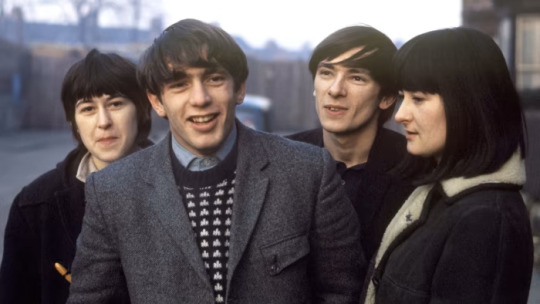
The most valuable material objects in my home are a copy of The Mountain Goat's Sweden and our blender. My wife informs me, and I believe her, that my socks, underpants and all my Stephen Stills records are worthless.
The blender, a Vitamix, justifies its worth by essentially having the engine of a small aircraft carrier. I use it to make Dollar Bin smoothies out of unidentified objects from our freezer; I figure if you add lots of peanut butter anything is bound to taste good. Some of the time that theory works out.
Meanwhile, although I love Sweden and I owe my initial cooking prowess to John Darnielle, there is no excuse for that record's current value other than simple supply and demand: turns out I'm about the only person who bought a copy at the time.
And so we live a simple life: no locks, no worries.
But, if I owned an original copy of Lal and Mike Watterson's Bright Phoebus my sainted wife and I would need to consider a home security system. Seriously: even reissued-but-instantly-deemed-illegal copies from ten years ago are worth hundreds of dollars. I have no idea why whoever owns the rights is actively interested in making no money on the record; I wish they'd get a life.
And so we'll need to go all digital today on one of the most joyful and reckless records I know. Tumblr, to name another company that seems disinterested in making any money whatsoever, will only let me paste in up to 10 songs per post and I refuse to not share with you a single song, so we'll make consideration of the record a two parter.
Let's dive into Side 1!
The record opens with pure joy. Everyone involved surely swung their arms and waved a baton in triumph while laying this down. I picture Mike Watterson, who at this point was a professional house painter, singing this while mounting a wobbly 40 foot ladder, paint cans swinging in every direction. When the chorus of boinging cosmic Jews harps, or whatever they are, arrive at the two minute mark I dare you to try and keep a straight face.
youtube
I'm pretty sure my long ago rock star buddy Thom Moore named his high school band Rubber Band, and I'm pretty sure he insisted no one use a "The" before the band's name. Is that true Thom? If so was the choice a tribute to Lal and Mike or were you just a lucky genius? I'm guessing the former is the case, but I know the later is also true.
Let's take a minute to give some context here. Lal and Mike Watterson were siblings who grew up in a singing family. Trained musicians they were not: neither of them read music or expected to make any real money off the songs they found in the real life around them and ringing forth from their own souls.
But by 1970 they had a ton of famous friends from the Fairport Convention universe (let's call it the FCU) and those friends convinced them to spend a few days recording the songs they'd been keeping to themselves.
What happened next is the stuff of The Velvet Underground and Nico-level legend for the British folk rock movement of that era: Lal and Mike made Bright Pheobus with their famous friends' support and it was bought and appreciated by only a few hundred people (who, to plagiarize Brian Eno, surely then went on make otherwise impossible music themselves). And then, after that, The Watersons never did anything like it again. Thus the preposterous cost of getting your hands on a copy of Bright Phoebus today.
The Scarecrow follows Rubber Band and is presented like a page from Mike's sensitive but drunk journal. I don't know what can be said about this song other than it makes me want to break out sobbing and I have no idea why.
youtube
How, he asks, could you lay me down and love me now? Wow.
Fine Horseman follows and you may know it from the cover by the equally legendary lost voice of Anne Briggs. Lal's voice is equally unique to Mike's: both of them turn the word primitive into high praise. And when an odd oboe, then an equally odd cello, accompany her I'm back to fighting off inexplicable tears.
youtube
Don't worry, the record isn't all this intense. Richard Thompson, who shares guitar duty throughout with the siblings' new-at-the-time brother-in-law, Martin Carthy, can chord a guitar in a manner that summons up God's restless paces. He taught himself to do so on the record's next track, Winifer Odd.
youtube
The track is eventually interrupted by sirens from the street outside the recording studio. The effect is startling on every listen. I always forget that this stuff wasn't recorded in 1742 or something.
youtube
Danny Rose is the record's only attempt at something vaguely normal. Happily, it's still totally weird. "Here is the bloodstained jacket he wore... this is his original gun... never been shown to the public before." Apparently we're getting a tour of an impossible museum.
Child Among the Weeds rounds out Side 1. Lal let's us rush through the record's garden; we meet an old man and a young man and demand lullabies of them both. Mike then arrives, the garden's God, and silences us all.
youtube
Stay tuned for Part 2. Bright Phoebus!
#Lal and Mike watterson#richard thompson#the wattersons#martin carthy#Thom moore#the mountain goats#Youtube
2 notes
·
View notes
Text
youtube
my friend asked me yesterday to sing the long one where the guy gets his head cut off, so i tried to remember all the twenty verses of this one…
#UNFORTUNATELY i forgot the verse where the husband dresses up as a woman#martin carthy#music#Youtube
2 notes
·
View notes
Text

Martin Carthy & Eliza Carthy [via]
10 notes
·
View notes
Text
youtube
"A long time ago I came across The Dominion of the Sword in a Penguin anthology of War Poetry, and the longer I have known it the better it’s got. It was written in 1649 by an anonymous pamphleteer and with the removal of verses or lines particular to that time becomes a reflection of the propaganda lie currently being touted for all it’s worth (again) that violence or the threat of it will get you nowhere. The tune is adapted from a Breton pipe tune called Ar Ch’akouz (The Leper)."
— Martin Carthy
Lay by your pleading, law lies a-bleeding Burn all your studies down, and throw away your reading Small power the word has, and can afford us Not half so much privilege as the sword does...
8 notes
·
View notes
Text
Carthy’s theory about the 1960s folk guitar wave was that the skiffle boom had been so big, and so many guitars sold, that inevitably some of the players turned out to be talented. Both Dylan and Paul Simon were fans of Carthy’s distinctive arrangement of Scarborough Fair. Dylan reworked it as Girl From The North Country, Simon more or less learned it and added it to his song Canticle. At the end of the first half Carthy played a different arrangement of the song, recorded with Norma Waterson and Eliza Carthy on The Gift.
Colin Randall at Salut! Live. Talking Martin Carthy: folk legend and 'human juke box'
3 notes
·
View notes
Text
258: Nic Jones // The Noah's Ark Trap

The Noah's Ark Trap Nic Jones 1977, Trailer
His performing career cut short in a traffic accident at age 35, his back catalogue entombed in legal wrangles, Nic Jones enjoys the legend of a musician more often spoken of than heard. Jones’s final album, 1980’s Penguin Eggs, is one of the small handful of true masterpieces of the English folk revival, a maritime journey through traditional song driven by Jones’s percussive, slapping fingerstyle guitar and curlicued vocal melodies. It’s also the only one of his records that’s stayed more or less in print since its release, meaning that it has completely overshadowed the rest of his catalogue (outside those collectors with the cash or pluck to track down the increasingly pricy original editions anyway).
As a listener who has obsessed over Penguin Eggs for years, I was shocked to find an unpriced copy of 1977’s The Noah’s Ark Trap in a local shop and, after some haggling with the good-natured proprietor, walked out with it for a song. I’d heard it a few times back in my music blog .rar downloading days and I recall liking it, but since I’ve had an actual copy for my table it’s steadily grown in my estimation to the point I’d rank it the near-equal of its more celebrated younger sibling. The LP contains a similar mixture of lengthy story songs (“The Golden Glove”), bawdy cautionary tales (ode to cum “The Wanton Seed”), blazing fiddle reels (“Miles Weatherhill”), and aching ballads (“Ten Thousand Miles,” perhaps the most moving thing he ever recorded). As on Penguin Eggs, Jones plays with minimal accompaniment (six of ten tracks are solo endeavours), giving the music a lonely grandeur, like a bard narrating the sunset of an age. These are songs of ancient heritage, and while Jones’s style bears the marks of the contemporary revival (and particularly the influence of Martin Carthy) he makes no concessions to pop. There is only this man with his pure and earnest voice, the guitar he’s poured the work of a lifetime into mastering, and visions of forests and green pastures that will endure till the rocks melt and the seas burn.
youtube
258/365
#nic jones#english folk music#british folk#folk revival#martin carthy#penguin eggs#folk music#music review#vinyl record#'70s music#'70s folk#guitar virtuoso#acoustic guitar#guitar god
3 notes
·
View notes
Video
youtube
Martin Carthy - Byker Hill
3 notes
·
View notes
Photo

In honor of Martin Carthy’s 82nd brithday, I thought I’d share this article about him from a few years ago
Bob Dylan’s 80th birthday was widely marked recently. He was not, though, the only great musician to celebrate. Martin Carthy was 80 on May 21, three days before Dylan, who has always acknowledged the influence of the older musician on his work.
In late 1959 Carthy recorded an EP for Topic Records. It is, sadly, lost. But more than 60 years later Topic is still his label and Carthy, the foremost figure in English folk music, remains one of the scene’s hardest working musicians, performing, recording and practising. “I still want to improve,” he says.
After a stint as a chorister at the Queen’s Chapel of the Savoy, Carthy began playing in coffee bars and folk clubs. In the early 60s he would often stay with the organiser after the gig. Such is his devotion to the scene and his rapport with the people involved that he still welcomes bookings from folk clubs.
In his long career Carthy has worked as a solo artist, in duos with Dave Swarbrick and John Kirkpatrick and in bands – The Albion Country Band, Band of Hope, Waterson:Carthy. He is innovative, open to ideas and musically curious. He plugged in with Steeleye Span, and played loud (“What’s the point of an electric guitar if you don’t?”). Brass Monkey, featuring trumpet, trombone and saxophone, paved the way for Bellowhead. He works with people from very different traditions – dub poetry and dhol drumming in The Imagined Village, jazz and flamenco with The Four Martins (Simpson, Taylor, Juan and Carthy)
Read the full article here
3 notes
·
View notes
Text
1/3/25
le sacre du printemps: l'adoration de la terre ... les augures printaniers ... jeu de rapt ... rondes printanières - igor stravinsky (decca: the mono years 1944-56: ernest ansernet & l'orchestre de la suisse romande)
blackwaterside - bert jansch
bransle gay - john renbourn
our captain cried "all hands" - martin carthy & dave swarbrick
let no man steal your thyme - pentangle
the wedding song - shirley collins
tam lin - fairport convention
john barleycorn must die - traffic
(new electric muse: the story of folk into rock)
songs from the wood ... the whistler - jethro tull (songs from the wood)
a hasty departure … the inn of the haunted owl … dreams in a brougham … chichikov bogd … mr tilly and his gang - ritual (the story of mr bogd part 1)
illusions inside … esoterica - kyros (mannequin)
counties and countries - jon anderson (true)
la menta vola - alphataurus (alphataurus)
#igor stravinsky#bert jansch#pentangle#fairport convention#john renbourn#martin carthy#shirley collins#sandy denny#jethro tull#ian anderson#martin barre#ritual#kyros#alphataurus#yes
0 notes
Text
the acknowledged basis for the Simon & Garfunkel
[yt]
2 notes
·
View notes